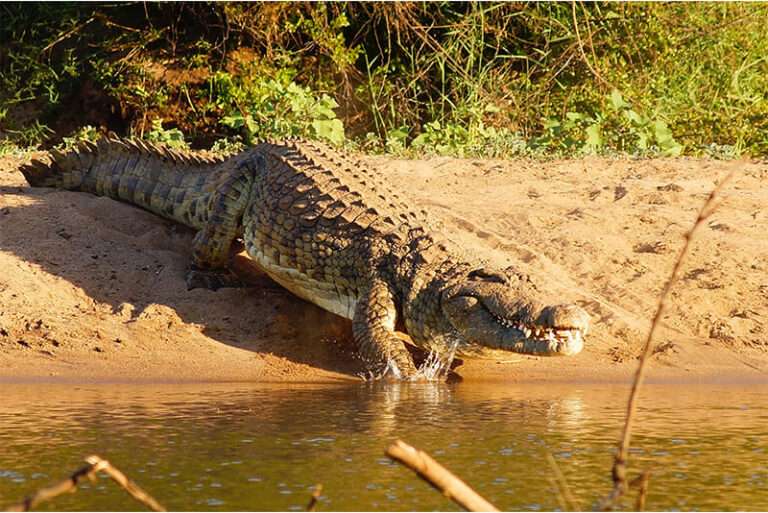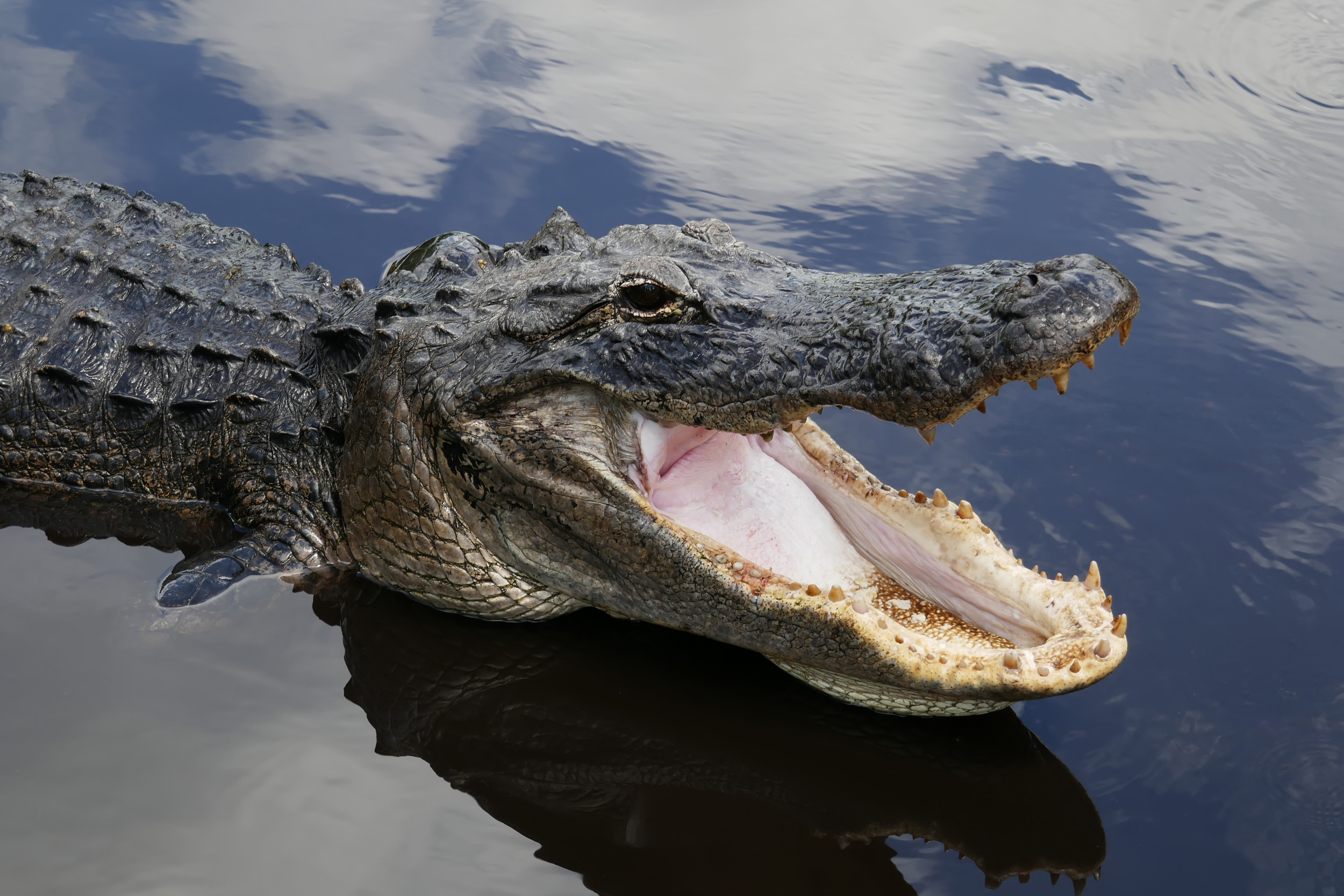
When they reach lengths of about 6 feet, they are considered adults. If the young escape predation and can find enough food, they may grow between 3 and 8 inches in length yearly. Mother alligators that are killed or removed from the area cannot defend their nests or young, and the hatchlings often are doomed. Females sometimes aggressively defend their young for more than a year. When the eggs are ready to hatch, the mother alligator digs into the nest mound, opens any eggs that have not hatched, and carries the young down to the water. The mother defends the nest against predators throughout the incubation period, approximately 65 days. The hard-shelled, white eggs are about 3 inches long and resemble goose eggs. Sometime during late June to mid-July, females lay between 20 and 60 eggs. This rotting vegetation helps warm the eggs during incubation. By June, pairs have mated, and females begin building mound nests out of marsh reeds or other vegetation. Alligator courtship is complex and involves a variety of vocalizations, head-slapping on the water’s surface, body posturing, snout and back rubbing, bubble blowing, and pheromone (scent) signals. With the start of their breeding season in May, males "bellow " to females and other males in the area. Reproduction: Alligators are active year-round, but they are most active in the warmer months in Georgia and South Carolina.

The snout is frozen in place, but the animal can still breathe. When ponds begin to freeze, alligators will stick their snouts above water. Juveniles also bask, but often in more protected areas with more dense vegetation. Alligators hear with ears that are located behind their eyes and are very sensitive to vibrations in the water. They have a “nictitating membrane” to protect their eyes so that they can see underwater.

There is only one other alligator species, the Chinese alligator.Alligators and their relatives are the last of the living reptiles that were closely related to dinosaurs, and their closest modern kin are birds.On the Savannah River Site, alligators are abundant in the Savannah River, its swamp and tributaries, L-Lake, Par Pond and other reservoirs on the site. Although they are primarily freshwater animals, alligators will also venture into brackish salt water. Females and juveniles occasionally use seasonal wetlands, such as Carolina Bays.

In South Carolina, alligators have been recorded to reach lengths of more than 13 feet.Īlligators live in swampy areas, rivers, streams, lakes and ponds. Alligators are restricted to the Coastal Plain, which includes the Central Savannah River Area of Georgia and South Carolina. Range and habitat: Alligators occur on the Atlantic Coast of North America from Florida through coastal North Carolina, and along the Gulf Coast into Texas. Ecologically, alligators are important predators and create important habitat for other wildlife by digging holes that hold water during droughts. This is a cooling mechanism essentially equivalent to a dog panting. On hot summer days they can sometimes be seen basking with their mouths open. To warm themselves, alligators bask in the sun, which is when they are frequently observed on the banks of water bodies.

Alligators are “cold-blooded,” meaning that they are ectothermic animals that cannot regulate their own body temperature, but assume the temperatures of their surrounding environment. The species is still federally listed as threatened because it looks like the American crocodile, which is endangered.Īlligators are long-lived animals whose life spans can exceed 60 years. Once a federally listed endangered species, American alligators have recovered and are common in many areas of the Southeast. American Alligator ( Alligator mississippiensis)ĭescription: American alligators ( Alligator mississippiensis) inhabit the southeastern United States.


 0 kommentar(er)
0 kommentar(er)
